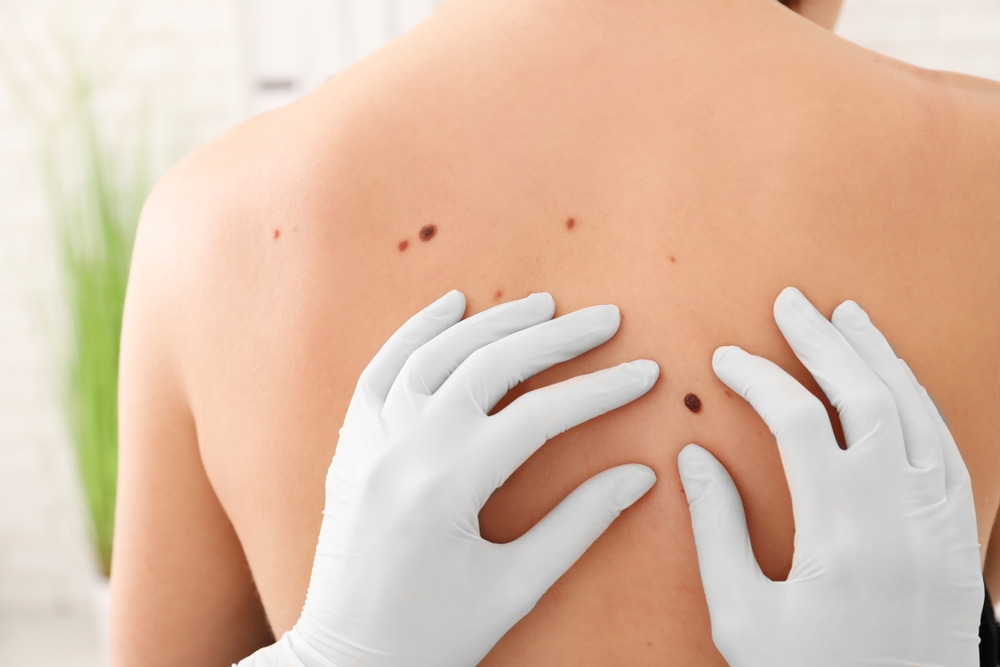
Skin Cancer: Common Signs and Symptoms
Skin Cancer: Common Signs and Symptoms
The most commonly seen cancer is skin cancer. There are several kinds of this cancer. Basal cell cancer and squamous cell cancer are the most prevalent. Another form is melanoma, which is less frequent but more harmful. One strategy to avoid skin cancer is to keep your skin from being exposed to too much UV radiation from the sun. It's especially crucial to prevent becoming burnt since it raises your chance of developing melanoma. Using sunscreen and wearing protective clothing, such as a hat with a brim, are effective ways to do this. While sun protection is essential for adults, it is much more critical for children. Even a few scorching sunburns as a youngster raise the chance of developing skin cancer later in life.
Types of skin cancers
The major types of skin cancer commonly seen are:
- Squamous cell carcinoma (SCC)
- Basal cell carcinoma (BCC)
- Melanoma
The first two types of skin cancer are referred to as non-melanoma skin cancers. Merkel cell tumors and Dermatofibrosarcoma protuberances are two more uncommon kinds of skin cancer.
What Skin Cancer Looks Like?
A strange skin outgrowth or soreness that does not go away might be the first sign of non-melanoma skin cancer. Skin cancer may begin as a nodule, rash, or uneven patch on the skin's surface. These areas may be elevated and readily leak or bleed. The size or shape of the visible skin mass may alter as cancer progresses, and the disease may spread to deeper layers of the skin. Because it can be difficult to distinguish one type of skin cancer from another, visit a dermatologist if you find any suspicious or developing markings on your skin.
Basal cell carcinomas on the head or neck may manifest as a pale patch of skin or a waxy transparent lump at first. In the middle of the lump, you may notice blood vessels or an indentation. If the carcinoma appears on the chest, it may resemble a brownish scar or a flesh-colored lesion. As cancer progresses, it may bleed if damaged, leak, and crust in certain spots.
Squamous cell carcinomas can also manifest as a cutaneous bump. The surface of these hard lumps is often rough, as opposed to the smooth and pearly look of basal cell carcinoma. If a nodule does not form, cancer may manifest as a reddish, scaly area. Unlike a skin rash, which fades with time, these hard, lesion-like spots grow slowly.
Merkel cell carcinomas might show as elevated, skin-colored moles that develop swiftly. These little tumors frequently occur on sun-exposed skin regions like the face, neck, or scalp.
Common Signs and Symptoms
Skin cancer presents itself in a variety of ways. Although it may present in different ways. There are some common ways, it may present itself on the body. It can be a simple mole that differs from the other moles around your body. Skin cancer sometimes can be identified as abnormal dome-shaped growth on any part of your body. Scaly patches, a non-healing sore, a sore that keeps on appearing back after some time, or a black stripe beneath your skin can all be the signs of skin cancer. The general warning signs of skin cancer include:
- Moles of any growth in the skin that changes color, size, shape, or texture
- Inflammed or open skin wounds that do not heal.
Skin cancer of melanoma variety may commonly appear as:
- A change in an existing mole.
- A spot on the skin that may be small, multicolored, or dark in shade with uneven boundaries.
- An abnormal spot on the skin that may be flat or elevated and can bleed
- Sometimes can also be seen as a cluster of firm, shiny dark bumps
- An abnormal growth
There may be additional signs and symptoms for different types of skin cancer. It is always advisable to visit your healthcare specialist in case of any abnormal appearance on your skin.
Common Tips to Avoid Skin Cancer
These skin cancer preventive strategies can help you reduce your risk:
- Every day, use sunscreen with at least 30 SPF. Apply it 30 minutes before stepping out.
- Reapply sunscreen every 2 hours if you're sweating profusely or swimming.
- Try avoiding the direct sunlight during the afternoons
- Wear sunglasses, caps, and light clothing that covers your skin if you must be outside.
- At least once a month, perform a skin self-examination.
- Schedule a yearly skin evaluation with your doctor.
References
- Howley EK. Skin cancer: Melanoma, basal cell, squamous cell carcinoma. U.S. News and World Report.
- American Academy of Dermatology Association. Types of skin cancer.
- https://www.cancer.net/cancer-types/melanoma/symptoms-and-signs
- https://dermnetnz.org/topics/melanoma-of-the-nail-unit
- https://www.skincancer.org/early-detection/
- https://www.cancer.org/cancer/basal-and-squamous-cell-skin-cancer/detection-diagnosis-staging/signs-and-symptoms.html
- https://www.skincancer.org/skin-cancer-information/squamous-cell-carcinoma/scc-warning-signs-and-images/
- https://www.cancer.org/cancer/melanoma-skin-cancer/about/what-is-melanoma.html





